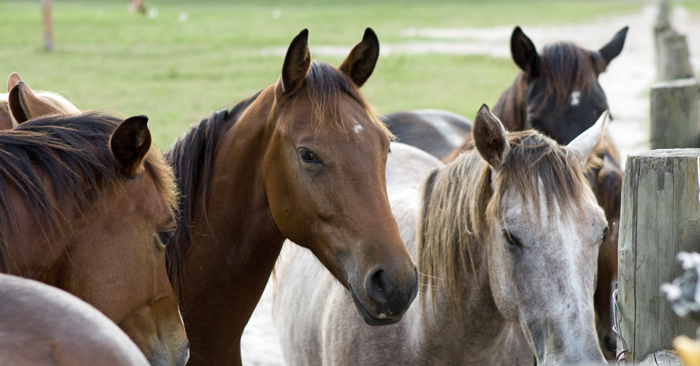Saundra TenBroeck, Department of Animal Sciences, University of Florida
One of the indices of the health of the horse industry has been foal registration data. When we study trends over the last 30 years we see a classic “Economics 101” Supply and Demand curve. Some of the supply-demand inclines and declines can be attributed to the repeal of favorable equine tax laws in 1980, increased fuel prices in 1981 and 2007, lower fuel prices in 1988, 1994 and 1998, high stock market prices in the late 90’s to 2007 and the closing of US slaughter plants in 2007. Other factors affecting supply and demand might include on-line wagering and casino gambling’s effects on pari-mutuel wagering, changes in breeders’ fees and incentive funds, registration rule changes allowing embryo transfer, cooled and frozen semen, and repeal of the white rule for quarter horses. Few would fail to recognize that the US economic downturn that began in 2008 caused more than a little consternation for the horse industry.
Still, to some extent, a healthy horse industry begins with the breeder. Stallions have been bred to mares for centuries but in recent decades, enhanced reproductive technologies have given breeders more options as well as access to genetics not previously available to them with live cover. Artificial insemination through fresh/extended, shipped cooled (AQHA approved in 1997), or frozen allows stallions to be marketed to more mares in a given season, and mares to be bred without having to travel. Embryo transfer allows mare owners to register more than one foal per year per mare and/or allow a mare to continue to compete while producing an offspring, though the cost for most mare owners is prohibitive. Gamete Inter Fallopian Tube Transfer (GIFT) is a process where eggs are aspirated from follicles of donor mares, placed in a recipient mare’s oviduct and the recipient mare is inseminated. Again, expensive but makes pregnancy from an infertile mare possible. When counting the cost for these “enhancements,” you generally have lower pregnancy rates while requiring more expertise, more intensive management and more dollars to produce a foal. Breeding decisions should be made after a full analysis of the economics, your production goals and your marketing options.
As we consider economic trends and their effects on choices we make regarding breeding, we have to also consider ramifications to the overall horse population. One of the biggest challenges facing our horse industry today is the growing numbers of unwanted horses. Simply put, there are more horses than people who want them. There has never been a time when breeding for mediocrity with no marketing plan for the foal was a good idea. Today more than ever, breeders must carefully examine their production goals and strive to breed responsibly.
Though well-intentioned, the efforts of many animal activists to force the closing of horse processing facilities resulted in many negative consequences for the horse industry. The base market price for sale horses was eliminated. The inability to market a horse that was unsuitable, or not serviceable for salvage value coupled with the high cost of veterinary euthanasia and carcass disposal were contributing factors in many horses being abandoned and/or neglected. With no market for unusable horses, those that choose to keep the horses in retirement cannot afford a younger replacement, thereby increasing the surplus of horses and driving sale prices down even more. Similarly, with so many horses available, adoption of Bureau of land Management (BLM) horses has also seen a sharp decline. Since wild horses are protected and they have no natural predators, herd size can double every four years. When adoption rate does not meet the rate at which the animals are removed from the plains to protect the environment, they must go to holding corrals and pastures. As of July 2015, nearly 47,000 wild horses and burros were in holding, costing the BLM 43.235 million of their 77.245 million dollar budget.
Wherever you fall on the ethical debates surrounding the fate of unwanted horses, as a horse breeder/owner you must consider both ends of the continuum. End of life issues are as important to consider as the breeding options. Horses live a long time (20 – 30 years). The American Association of Equine Practitioners (AAEP) estimates the annual cost of horse ownership to be $1895 – $5000. A tough economy, shrinking markets, horse owners with limited skills, knowledge and resources, rescue/retirement facilities maxed out, these are contributing factors to the growing number of unwanted horses and the real possibility of abandonment or neglect. Before breeding consider: can I buy one cheaper than I can raise one? If I produce a foal and can’t sell it, can I keep it? Make informed decisions and be a thoughtful breeder.
Free to Roam? The Mustang Debate
- End of Life Issues – Euthanasia:A Horse Owner’s Final Act of Care - October 4, 2024
- Economic Impact Study Indicates the Florida Equine Industry Remains Strong - April 12, 2024
- Management Strategies to Prevent Seasonal Impaction Colic in Horses - October 27, 2023

